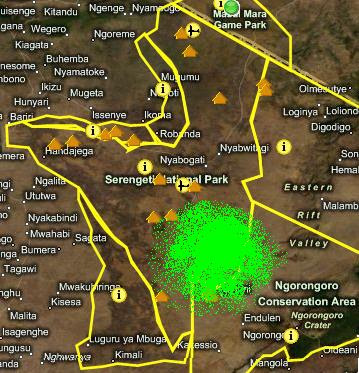In response to recent concern in the media about the drought situation in Kenya, Offbeat Safari Camps have issued this update on the situation on the ground in Kenya:
Whilst we appreciate that some areas of Kenya may be struggling due to drought conditions this is not affecting in any way the experience that our guests are having whilst staying at any of Offbeat's properties.
It is dry in Kenya right now as a lot of areas did not get the usual rain in April and May. However, this happens every few years. The forecast is that the short November rains are going to arrive early, in October, and should continue through November too, so we’ve just got a few more weeks to wait – if the forecast is right! At the moment game viewing is spectacular as the game is concentrated near water. We hope that the below description of the areas in which we operate will help to reassure you and encourage you to send more clients to Kenya.
The Maasai Mara from Piers Winkworth – owner of
Offbeat Mara CampAgain the Mara is very dry and this has no doubt been reported on a fair bit. In particular reference to the river being low and the Mau forest being encroached on.
Around the camp (in our Offbeat valley) game viewing has been and continues to be excellent. Our Offbeat lions are seen at close quarters by car and horse almost every day, our 7 resident buffalo come into camp at night as usual, elephants come and go, leopard are seen more frequently and are becoming more habituated to our cars. This valley of 1,000 or so acres is exclusive to Offbeat Safaris (Offbeat Mara and the riding safaris). Outside this area the wider North Mara Conservancy (formerly known as Koyiaki) is very dry and there are quite a number of cattle. This is not a new situation and occurs most years towards the end of the dry season. We have had the odd bit of rain, and the Olare Orok stream still has enough water for the wildlife. We have had the odd bit of rain, but not enough. When the predicted rain of November hopefully comes pressure from livestock will ease.









